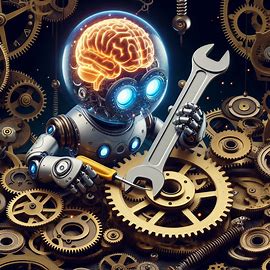
The future cannot be predicted. Sounds like a contradiction, right? We often try to imagine what the next big thing will be, yet time and time again, reality doesn’t quite unfold the way we expect. Take, for example, the bold predictions that never materialized: by now, we were supposed to have flying cars everywhere, teleportation devices, and robots running our households. While technology has certainly advanced, it has done so in ways that surprise us—rarely following the neat, linear trajectory we expect.
Let’s consider some famous failed predictions. In the 1990s, many thought that virtual reality would take over the entertainment world by the early 2000s. Fast forward to today, and while VR exists, it’s still far from mainstream. Similarly, experts in the early 20th century predicted we’d all be commuting in flying cars by now, yet here we are, navigating morning traffic jams on solid ground. Even predictions about the dominance of personal computers in the home underestimated how much smaller, more personal devices like smartphones would change everything.
The reason predictions often fail is because they come from a linear perspective. We assume that future innovations will follow the patterns we already understand, but in reality, breakthroughs often occur in ways that challenge the very foundation of what we thought was possible.
But on the other hand, we can start painting a picture of what the future could look like if we are the ones driving the change. Looking back at pivotal moments like the Industrial Revolution, the internet boom, and the software revolution, we can connect some dots. These were periods of exponential growth fueled by new systems of interoperability and collaboration.
Take software, for instance. Software didn’t explode into mainstream use simply because it was convenient. There was groundwork laid with hardware development—especially the creation of computer chips. Then, came an essential component: a kernel that allowed software to interoperate with the hardware—effectively the bridge that made software innovation possible. For example, open-source operating systems like Linux drove widespread adoption, allowing developers around the world to innovate on top of a shared platform.
So what will that look like in the days of AI?
The Future of the Internet: AI Agents in Action
The future of the internet will likely be a world where AI agents work for us online. Instead of manually browsing, typing, and interacting with websites or services, your AI agent will handle most of the work. Whether it’s managing your social media, negotiating deals, or handling personal finances, your success may depend on how advanced or efficient your AI agent is.
No more clicking through endless tabs or typing repetitive queries—your AI could act autonomously on your behalf. Need to book a flight? Your AI agent would already know your preferences and requirements, searching for the best deals without you lifting a finger. It could negotiate your contracts, apply for jobs, or even curate your personal online interactions. It’s the next step in automating not just physical tasks but digital experiences, making your presence online almost effortless.
In this AI-driven future, we might not even need virtual interfaces like we use now. Why log in to a website when your AI can act as your proxy, interacting with the digital world in ways that are more efficient than any human could manage?
Building the AI Kernel of the Future
Just as software had its kernel, AI will need its own kind of foundation—an underlying framework that unifies all these AI-driven agents and allows them to communicate with our current platforms. We might be looking at an open-source AI kernel, a foundational platform that ensures AI systems from different creators can interoperate smoothly, regardless of their origins or purposes. Without it, the ecosystem of AI agents would be fragmented and inefficient, just like how incompatible operating systems hindered early software development.
It’s essential to have a unified platform where AI systems can “talk” to each other and to existing technologies. This platform could help bridge AI agents with various industries, ensuring that AI-driven tasks like autonomous shopping, banking, and entertainment are accessible to everyone.
The Role of Government and Regulation
One thing we can’t overlook is the role of regulation in this AI future. Governments will undoubtedly step in to ensure ethical AI use, data privacy, and the safety of consumers interacting with AI systems. In fact, without proper regulation, we could see massive exploitation or unforeseen consequences, like AI agents being used for malicious purposes. That’s why it’s likely that in the future, regulations will play a key role in shaping how far AI integration goes and who can use AI agents.
Governments might even offer incentives to companies working toward this AI ecosystem or regulate how AI agents access personal data, limiting their use in specific areas while promoting them in others (think healthcare or finance).
So, What Will the Future Look Like?
At this point, it’s important to ask: what do you think the future could look like? We can imagine that an open-source AI platform, combined with technological advancements and proper regulation, will bring about a new internet where AI agents act as our digital proxies. But what if something entirely unexpected happens? Could the advancements in AI give rise to new industries we haven’t even imagined yet, the way the internet did for e-commerce?
The road to the future is never as predictable as we think, but we can still prepare by focusing on foundational elements—platforms, regulations, and trends—that have historically shaped innovation.
At the end of the day, if you’re feeling a bit lost or unclear about what the future holds, well, that’s why this article is called “Whispers from the Future.” After all, even though we can’t fully predict what’s coming, we can still lean in and listen to the whispers guiding us forward. Share your thoughts below—how do you see the AI frontier unfolding?
